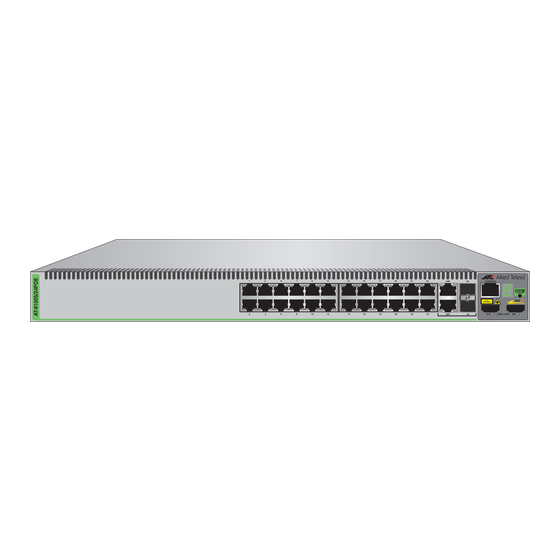
Allied Telesis T-8100L/8 Ethernet Switch Manuals
Manuals and User Guides for Allied Telesis T-8100L/8 Ethernet Switch. We have 1 Allied Telesis T-8100L/8 Ethernet Switch manual available for free PDF download: User Manual
Allied Telesis T-8100L/8 User Manual (330 pages)
Brand: Allied Telesis
|
Category: Switch
|
Size: 7 MB
Table of Contents
-
Preface
15 -
-
-
HTTP Mode24
-
HTTPS Mode24
-
-
-
-
-
-
-
-
-
-
Overview122
-
-
-
Overview132
-
Port-Based Vlans132
-
Tagged Vlans132
-
Native VLAN133
-
-
Displaying Vlans134
-
Adding a VLAN135
-
Modifying Vlans137
-
Deleting Vlans142
-
-
-
Overview150
-
-
-
Overview160
-
Guidelines164
-
-
-
Overview170
-
PD Classes170
-
Power Budget170
-
-
-
Overview180
-
-
-
Overview188
-
-
Overview202
-
-
-
Overview216
-
-
-
Overview232
-
Creating an ACL235
-
-
-
Overview252
-
-
-
Overview264
-
Enabling RIP264
-
-
-
-
Overview282
-
-
-
-
Overview322
-
Packet Counters322
-
Sflow Collectors323
-
Guidelines323
-
Advertisement
